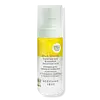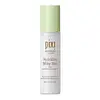What's inside
What's inside
 Key Ingredients
Key Ingredients

 Benefits
Benefits

 Concerns
Concerns

 Ingredients Side-by-side
Ingredients Side-by-side

Water
Skin ConditioningEthylhexyl Palmitate
EmollientCaprylic/Capric Triglyceride
MaskingCoco-Caprylate
EmollientSimmondsia Chinensis Seed Oil
EmollientCaprae Lac
Skin ConditioningColostrum
Skin ConditioningBifida Ferment Lysate
Skin ConditioningLactose
HumectantMilk Protein
Skin ConditioningArtemisia Capillaris Extract
Hyaluronic Acid
HumectantSqualane
EmollientAloe Barbadensis Leaf Water
MaskingEryngium Alpinum Flower Extract
Skin ConditioningChamomilla Recutita Flower Extract
MaskingHoney Extract
HumectantHippophae Rhamnoides Oil
EmollientSymphytum Officinale Leaf Extract
Skin ConditioningHydrolyzed Jojoba Esters
Skin ConditioningGlycerin
HumectantSodium Chloride
MaskingHydroxyacetophenone
AntioxidantPentaerythrityl Tetra-Di-T-Butyl Hydroxyhydrocinnamate
AntioxidantHydrocinnamyl Cinnamate
PerfumingEthylhexylglycerin
Skin ConditioningPropanediol
SolventTocopherol
AntioxidantWhey Protein
Skin ConditioningC10-18 Triglycerides
EmollientLecithin
EmollientWater, Ethylhexyl Palmitate, Caprylic/Capric Triglyceride, Coco-Caprylate, Simmondsia Chinensis Seed Oil, Caprae Lac, Colostrum, Bifida Ferment Lysate, Lactose, Milk Protein, Artemisia Capillaris Extract, Hyaluronic Acid, Squalane, Aloe Barbadensis Leaf Water, Eryngium Alpinum Flower Extract, Chamomilla Recutita Flower Extract, Honey Extract, Hippophae Rhamnoides Oil, Symphytum Officinale Leaf Extract, Hydrolyzed Jojoba Esters, Glycerin, Sodium Chloride, Hydroxyacetophenone, Pentaerythrityl Tetra-Di-T-Butyl Hydroxyhydrocinnamate, Hydrocinnamyl Cinnamate, Ethylhexylglycerin, Propanediol, Tocopherol, Whey Protein, C10-18 Triglycerides, Lecithin
Water
Skin ConditioningGlycerin
HumectantEthylhexyl Palmitate
EmollientDipropylene Glycol
HumectantCetyl Ethylhexanoate
EmollientPhenoxyethanol
PreservativePolyglyceryl-10 Oleate
Skin ConditioningEthylhexylglycerin
Skin ConditioningPEG-60 Hydrogenated Castor Oil
EmulsifyingCetearyl Isononanoate
EmollientAllantoin
Skin ConditioningCeteareth-20
CleansingTrideceth-10
CleansingHydrolyzed Glycosaminoglycans
HumectantHydrogenated Lecithin
EmulsifyingGlyceryl Stearate
EmollientCeteareth-12
EmulsifyingCetyl Alcohol
EmollientStearyl Alcohol
EmollientCetyl Palmitate
EmollientDisodium EDTA
Parfum
MaskingCitric Acid
BufferingBenzoic Acid
MaskingLecithin
EmollientAvena Strigosa Seed Extract
Skin Conditioning1,2-Hexanediol
Skin ConditioningSodium Hyaluronate
HumectantPotassium Sorbate
PreservativeWater, Glycerin, Ethylhexyl Palmitate, Dipropylene Glycol, Cetyl Ethylhexanoate, Phenoxyethanol, Polyglyceryl-10 Oleate, Ethylhexylglycerin, PEG-60 Hydrogenated Castor Oil, Cetearyl Isononanoate, Allantoin, Ceteareth-20, Trideceth-10, Hydrolyzed Glycosaminoglycans, Hydrogenated Lecithin, Glyceryl Stearate, Ceteareth-12, Cetyl Alcohol, Stearyl Alcohol, Cetyl Palmitate, Disodium EDTA, Parfum, Citric Acid, Benzoic Acid, Lecithin, Avena Strigosa Seed Extract, 1,2-Hexanediol, Sodium Hyaluronate, Potassium Sorbate
 Reviews
Reviews

Alternatives
Ingredients Explained
These ingredients are found in both products.
Ingredients higher up in an ingredient list are typically present in a larger amount.
Ethylhexyl Palmitate, also known as octyl palmitate, is created from 2-ethylhexyl alcohol and palmitic acid. It is a fatty acid ester.
The fatty acid content of Ethylhexyl Palmitate makes it an emollient. Emollients help soften and hydrate your skin by trapping moisture within.
Ethylhexyl Palmitate is also used to help improve the texture of cosmetics. It helps other ingredient dissolve in products and help disperse ingredients more evenly.
You'll likely find this ingredient in sunscreen, as it is often used to mix UV-blocking ingredients such as avobenzone and ethylhexyl triazone.
It can also help stabilize the fragrances in a product as a fragrance fixative.
Ethylhexyl Palmitate can be used to substitute mineral oil.
Due to its high fatty acid content, it may not be fungal-acne safe.
Learn more about Ethylhexyl PalmitateEthylhexylglycerin (we can't pronounce this either) is commonly used as a preservative and skin softener. It is derived from glyceryl.
You might see Ethylhexylglycerin often paired with other preservatives such as phenoxyethanol. Ethylhexylglycerin has been found to increase the effectiveness of these other preservatives.
Glycerin is already naturally found in your skin. It helps moisturize and protect your skin.
A study from 2016 found glycerin to be more effective as a humectant than AHAs and hyaluronic acid.
As a humectant, it helps the skin stay hydrated by pulling moisture to your skin. The low molecular weight of glycerin allows it to pull moisture into the deeper layers of your skin.
Hydrated skin improves your skin barrier; Your skin barrier helps protect against irritants and bacteria.
Glycerin has also been found to have antimicrobial and antiviral properties. Due to these properties, glycerin is often used in wound and burn treatments.
In cosmetics, glycerin is usually derived from plants such as soybean or palm. However, it can also be sourced from animals, such as tallow or animal fat.
This ingredient is organic, colorless, odorless, and non-toxic.
Glycerin is the name for this ingredient in American English. British English uses Glycerol/Glycerine.
Learn more about GlycerinLecithin is a term for a group of substances found in the cell membranes of plants, animals, and humans. They are made up of mixture of phospholipids.
This ingredient has emollient and emulsifying properties.
As an emollient, lecithen helps soften the skin and creates a barrier to keep moisture in.
As an emulsifier, it also helps prevent water and oil ingredients from separating. Lecithin can also help ingredients be better absorbed by the skin.
This is because the phospholipids in lecithin produce liposomes. Liposomes help other ingredients get through the skin barrier.
Depending on the source of this ingredient, lecithin may not be fungal acne safe. This is because some sources of lecithin come from soybean oil, which may feed the malassezia yeast that feeds fungal acne.
We recommend reaching out to the brand you are purchasing from to inquire about the source of their lecithin.
Some other names for this ingredient include soy lecithin and deoiled soy lecithin.
Learn more about LecithinWater. It's the most common cosmetic ingredient of all. You'll usually see it at the top of ingredient lists, meaning that it makes up the largest part of the product.
So why is it so popular? Water most often acts as a solvent - this means that it helps dissolve other ingredients into the formulation.
You'll also recognize water as that liquid we all need to stay alive. If you see this, drink a glass of water. Stay hydrated!
Learn more about Water